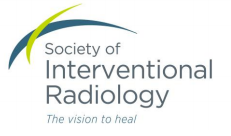Noticias


- Título: Better interventional radiology staffing needed to meet demand
- Fecha: 05-05-2016
FAIRFAX, Va. (May 5, 2016)—The Society of Interventional Radiology published 11 new recommendations to ensure that interventional radiology suites are adequately staffed to meet the growing demand for services. These first-ever, evidence-based interventional radiology staffing guidelines were published in the May issue of the Journal of Vascular and Interventional Radiology (JVIR).
“Interventional radiology is an integral component of modern health care and excellent patient care requires an efficient and effective interventional radiology department,” said Mark O. Baerlocher, M.D., the guidelines’ lead author. “Medical facilities need clear plans to adequately staff interventional radiology teams to ensure access to care and quality outcomes, particularly during off hours.”
The guidelines stem from the findings of a 2014 multicenter survey of SIR members designed to gauge the status of interventional radiology staffing and identify gaps. The survey found interventional radiologists face roadblocks to adequate interventional radiology staffing, particularly during off hours. Respondents noted specific difficulties obtaining access to anesthesia services and qualified support staff for on-call procedures, as well as a need for admitting privileges.
Based on those findings, SIR’s new guidelines include a requirement for three nonphysician health care practitioners—at least one of which is a registered nurse—to assist the interventional radiologist for every interventional radiology suite in use. The guidelines also highlight the need for access to anesthesia services and cross-training of nonphysician staff to allow for flexible staffing in the off hours. SIR also calls for admitting privileges for interventional radiologists and parity with other admitting physicians. The guidelines stress that inadequate resources in these areas impair the practice of clinical interventional radiology and may possibly endanger the mission of an institution.
“On-call and weekend staffing are particularly important so that stable care can be provided on a 24/7 basis, especially given that off-hours patients are often more critically ill than patients undergoing scheduled procedures during the day,” said Baerlocher, who is chief of interventional radiology for the Royal Victoria Hospital in Barrie, Ontario.
“Adequate interventional radiology staffing ensures timely access to needed therapies, particularly in critical care situations,” said SIR President Charles E. Ray Jr., M.D., FSIR, an interventional radiologist, professor and chair of the department of radiology at the College of Medicine at the University of Illinois at Chicago. “Collaboration with other specialties is key to ensuring the flexibility and availability of staff to get the job done, on and off hours.”
In addition to Baerlocher, the co-authors of “Society of Interventional Radiology Position Statement: Staffing Guidelines for the Interventional Radiology Suite” are: Sean A. Kennedy, M.D., University of Toronto, Canada; Thomas J. Ward, M.D., Florida Hospital, University of Florida College of Medicine, Orlando; Boris Nikolic, M.D., MBA, FSIR, Stratton Medical Center, Albany, N.Y.; Curtis W. Bakal, M.D., MPH, FSIR, Tufts University School of Medicine, Boston; Curtis A. Lewis, M.D., MBA, J.D., FSIR, Emory University School of Medicine, Atlanta; Adam B. Winick, M.D., FSIR, University of Virginia Health System, Charlottesville; Gerald A. Niedzwiecki, M.D., FSIR, Advanced Imaging and Interventional Institute, Clearwater, Fla.; Ziv J Haskal, M.D., FSIR, University of Virginia Health System, Charlottesville; and Alan H. Matsumoto, M.D., FSIR, University of Virginia Health System, Charlottesville.
###
About the Society of Interventional Radiology
The Society of Interventional Radiology is a nonprofit, professional medical society representing more than 6,100 practicing interventional radiology physicians, scientists and clinical associates, dedicated to improving patient care through the limitless potential of image-guided therapies. SIR’s members work in a variety of settings and at different professional levels—from medical students and residents to university faculty and private practice physicians. Visit sirweb.org.
- Fuente: endovascular.es





